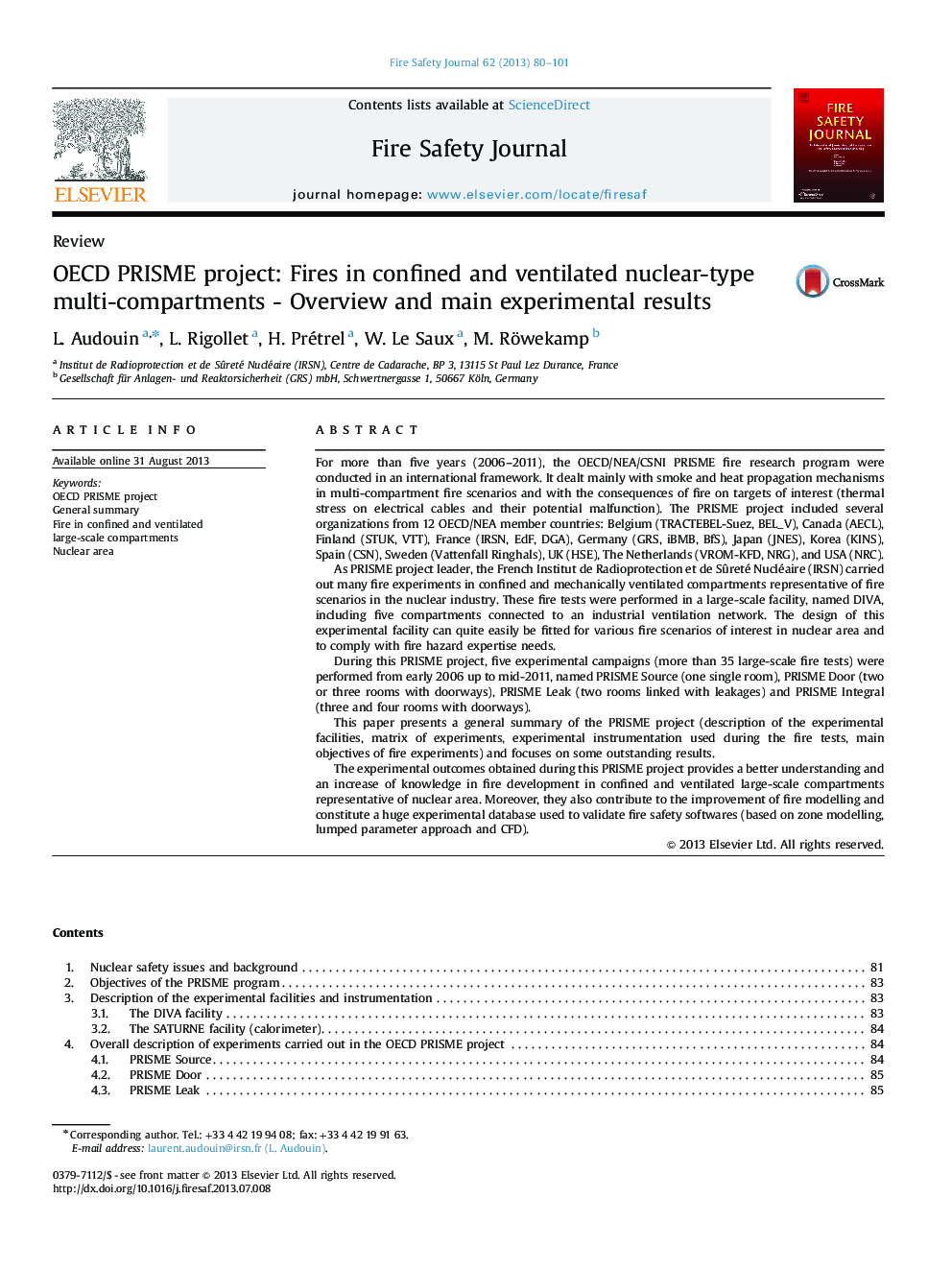| Article ID | Journal | Published Year | Pages | File Type |
|---|---|---|---|---|
| 269959 | Fire Safety Journal | 2013 | 22 Pages |
•The PRISME Project included several organizations from 12 OECD/NEA member countries.•This program dealt mainly with smoke and heat propagation in multi-compartment fires.•It dealt with the fire effects on targets (thermal stress and malfunction on cables).•Five campaigns (~35 large-scale fire tests) were performed from 2006 up to 2011.•The outcomes provide a better understanding for confined/ventilated fire compartments.
For more than five years (2006–2011), the OECD/NEA/CSNI PRISME fire research program were conducted in an international framework. It dealt mainly with smoke and heat propagation mechanisms in multi-compartment fire scenarios and with the consequences of fire on targets of interest (thermal stress on electrical cables and their potential malfunction). The PRISME project included several organizations from 12 OECD/NEA member countries: Belgium (TRACTEBEL-Suez, BEL_V), Canada (AECL), Finland (STUK, VTT), France (IRSN, EdF, DGA), Germany (GRS, iBMB, BfS), Japan (JNES), Korea (KINS), Spain (CSN), Sweden (Vattenfall Ringhals), UK (HSE), The Netherlands (VROM-KFD, NRG), and USA (NRC).As PRISME project leader, the French Institut de Radioprotection et de Sûreté Nucléaire (IRSN) carried out many fire experiments in confined and mechanically ventilated compartments representative of fire scenarios in the nuclear industry. These fire tests were performed in a large-scale facility, named DIVA, including five compartments connected to an industrial ventilation network. The design of this experimental facility can quite easily be fitted for various fire scenarios of interest in nuclear area and to comply with fire hazard expertise needs.During this PRISME project, five experimental campaigns (more than 35 large-scale fire tests) were performed from early 2006 up to mid-2011, named PRISME Source (one single room), PRISME Door (two or three rooms with doorways), PRISME Leak (two rooms linked with leakages) and PRISME Integral (three and four rooms with doorways).This paper presents a general summary of the PRISME project (description of the experimental facilities, matrix of experiments, experimental instrumentation used during the fire tests, main objectives of fire experiments) and focuses on some outstanding results.The experimental outcomes obtained during this PRISME project provides a better understanding and an increase of knowledge in fire development in confined and ventilated large-scale compartments representative of nuclear area. Moreover, they also contribute to the improvement of fire modelling and constitute a huge experimental database used to validate fire safety softwares (based on zone modelling, lumped parameter approach and CFD).
